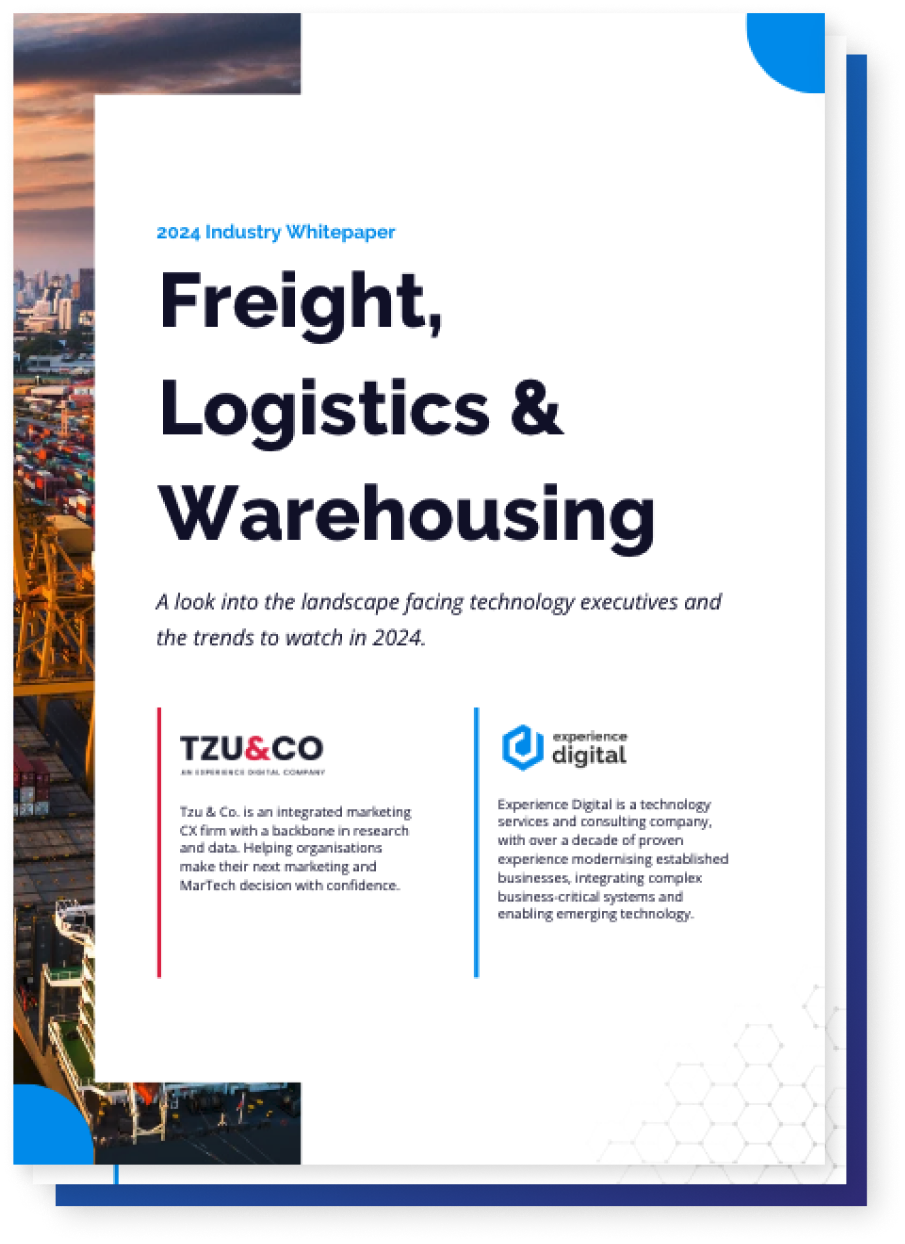Freight, Logistics & Warehousing
A look into the landscape facing technology executives and the trends to watch in 2024.

What this report covers
Freight, logistics and warehousing is the backbone of Australia’s economy. An efficient, sustainable and cost-effective industry enables the nation to remain competitive in global markets and to deliver more value domestically to businesses and consumers.
The industry is at a crossroads, facing significant challenges but also poised for considerable growth. For every obstacle such as labour shortages, sustainability and environmental concerns and the constant threat of cybercrime, there’s a new opportunity to modernise and evolve.
Intelligent Transport Systems, blockchain in logistics, IoT, cloud computing and new cybersecurity measures are surfacing to reshape supply chains in Australia.
This report combines Tzu & Co’s market research faculty with Experience Digital’s proven capabilities enabling technological advancement for Freight, logistics and warehousing industries. It aims to provide both a look into the trends and challenges faced today and on the horizon and Experience Digital’s perspective as to where and how AI specifically can be leveraged to unlock substantial innovation.
The industry

Industry trends and innovations
The industry is continuously growing with the following innovations aimed at enhancing efficiency, sustainability, and resilience.
Intelligent Transport Systems (ITS)
The integration of ITS in Australia is enhancing dynamic speed zones, active lane management, traveller information systems, and e-tolling. The global ITS market is expected to grow significantly, indicating a push for smarter, more efficient transportation solutions. 4
Technology Adoption
The use of technology is optimising logistics operations and improving supply chain visibility.
Blockchain in Logistics: By creating an immutable ledger of activities, blockchain technology aims to enhance efficiency and security across the supply chain. This technology helps prevent fraud and clerical errors, offering a more transparent and reliable logistics process. 5
Internet of Things (IoT): Technology is becoming increasingly prevalent in logistics, enabling real-time tracking and data exchange across devices. This connectivity supports efficient shipment tracking, data collection, and overall operational improvement. 5
Cloud Computing: The logistics software market is seeing increased adoption of cloud-based systems, allowing for scalability, reduced logistics costs, and enhanced data security. This technology supports remote access and collaboration, essential for modern logistics operations. 5
Download the whitepaper to read more.